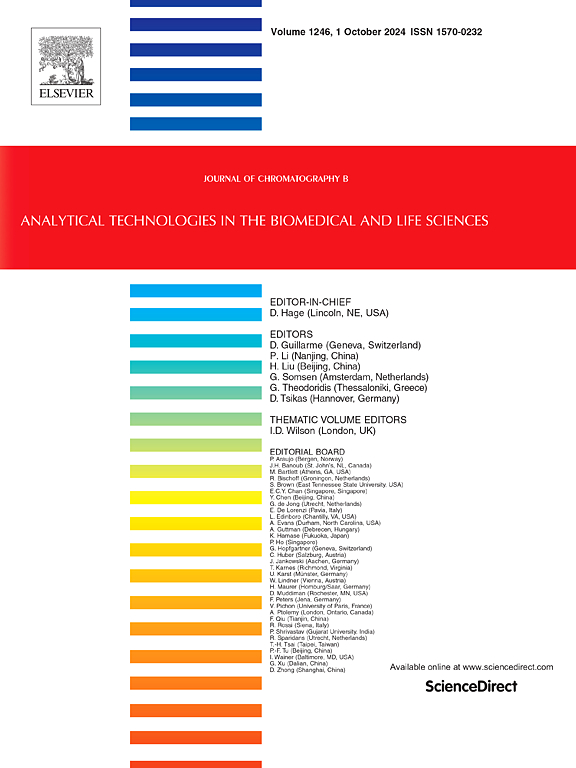Purification of chicoric acid from dandelion herbal pieces using macroporous resin combined with HSCCC and its antioxidant capacity in human keratinocytes
IF 2.8
3区 医学
Q2 BIOCHEMICAL RESEARCH METHODS
引用次数: 0
Abstract
Dandelion (Taraxacum mongolicum Hand. - Mazz.) is a traditional Chinese medicinal herb rich in active ingredients such as flavonoids and polyphenols, which are used to treat swelling and inflammation-related diseases. In the present study, total flavonoids and polyphenols in dandelion herbal pieces (Taraxaci Herba) extracts were purified by HPD-500 resin column chromatography, and the total flavonoid purity in purified extracts E80% was 5.3 times that of before purification, reaching 43.98 %. The purified extracts E80% were analyzed by UHPLC–QTOF–MS and 8 phenolic acid compounds were identified, including caffeic acid, chlorogenic acid, and chicoric acid. Moreover, high-speed countercurrent chromatography method was established to separate chicoric acid from E80%. n-hexane-ethyl acetate-methanol-0.5 % acetic acid in water (2:7:2:7, v/v/v/v) was selected as the solvent system. Chicoric acid with a purity of 95.44 % was obtained with the flow rate of 2.0 mL/min, the speed of 850 r/min, the system temperature of 35 °C and sample loading of 100 mg. In vitro bioassay showed that chicoric acid presented impressive antioxidant activities in SDS-induced human keratinocytes by promoting cell proliferation, increasing superoxide dismutase (SOD) activity, reducing the reactive oxygen species (ROS) level, stabilizing the mitochondrial membrane potential, and inhibiting cell apoptosis. Collectively, these results lay a theoretical basis for the industrial separation of natural antioxidant compounds.

求助全文
约1分钟内获得全文
求助全文
来源期刊

Journal of Chromatography B
医学-分析化学
CiteScore
5.60
自引率
3.30%
发文量
306
审稿时长
44 days
期刊介绍:
The Journal of Chromatography B publishes papers on developments in separation science relevant to biology and biomedical research including both fundamental advances and applications. Analytical techniques which may be considered include the various facets of chromatography, electrophoresis and related methods, affinity and immunoaffinity-based methodologies, hyphenated and other multi-dimensional techniques, and microanalytical approaches. The journal also considers articles reporting developments in sample preparation, detection techniques including mass spectrometry, and data handling and analysis.
Developments related to preparative separations for the isolation and purification of components of biological systems may be published, including chromatographic and electrophoretic methods, affinity separations, field flow fractionation and other preparative approaches.
Applications to the analysis of biological systems and samples will be considered when the analytical science contains a significant element of novelty, e.g. a new approach to the separation of a compound, novel combination of analytical techniques, or significantly improved analytical performance.
 求助内容:
求助内容: 应助结果提醒方式:
应助结果提醒方式:


